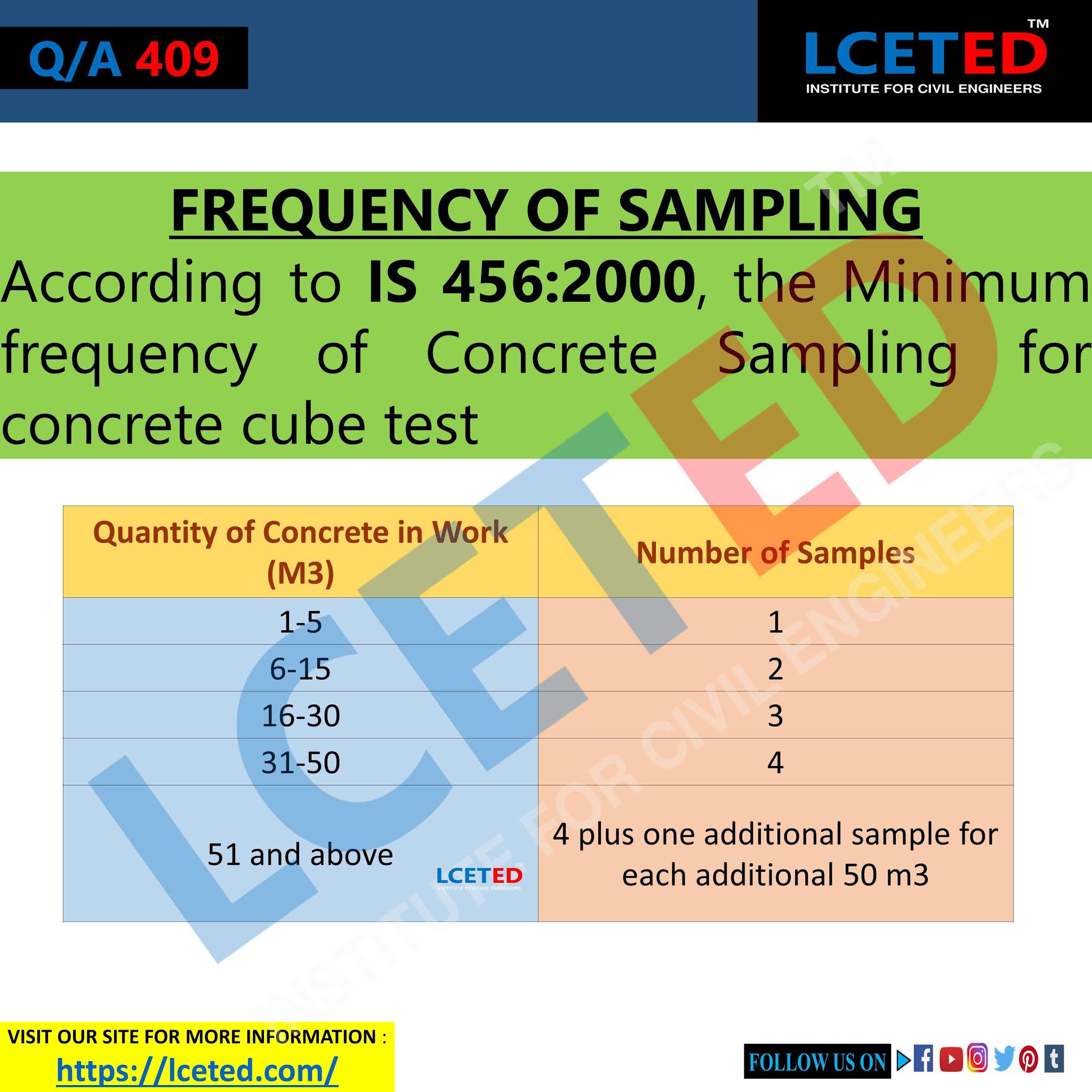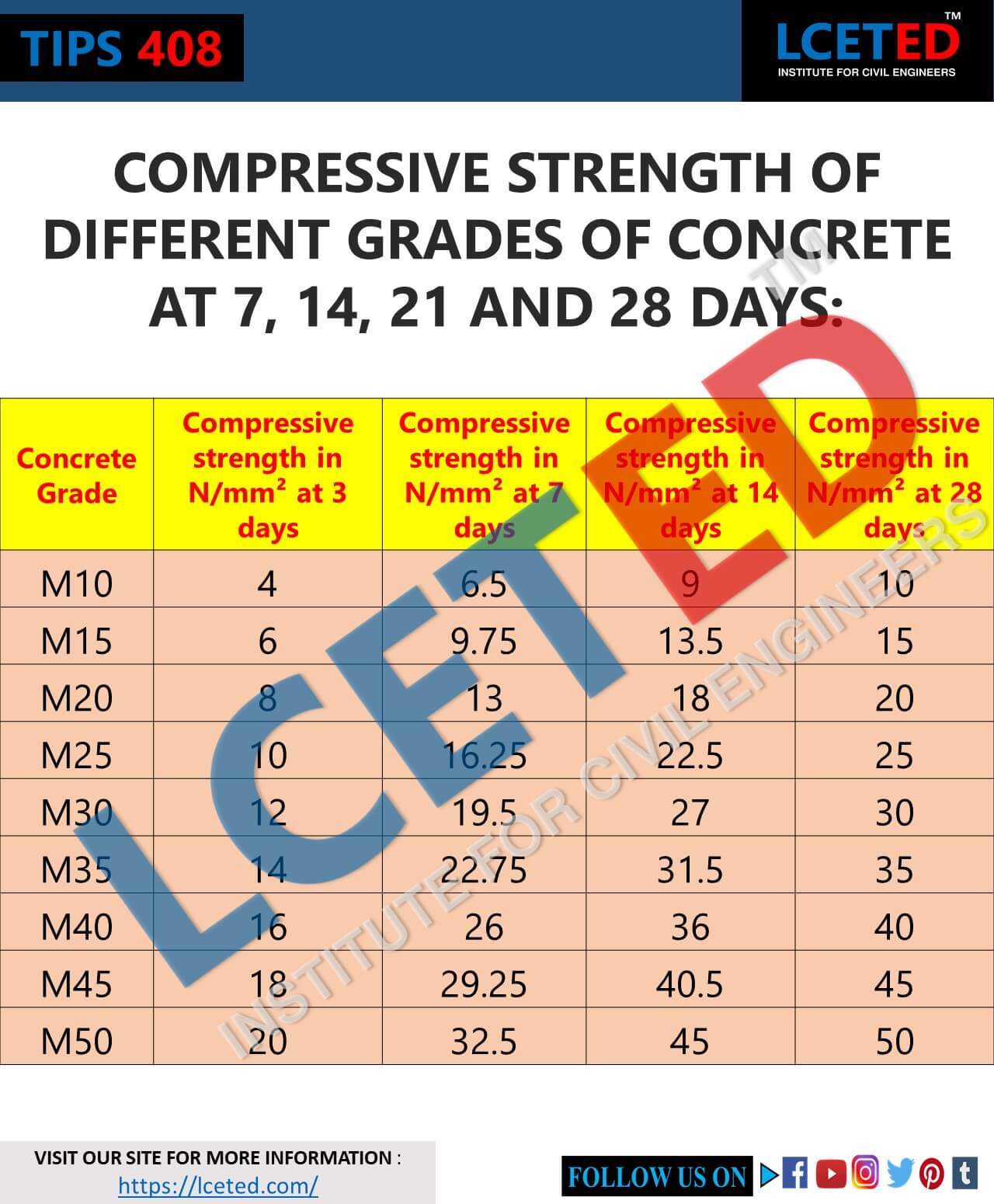What Is The Compressive Strength?
Compressive strength is the
ability to carry loads of material or structure on its surface without any
cracking or deformation. An object under compression will reduce in size and,
under tension, the size will continue to lengthen.
Compressive Strength = Load /
Cross-sectional Area
IMPORTANCE
OF COMPRESSIVE STRENGTH IN CONCRETE
Concrete is a mixture of
sand, cement and aggregate. The concrete strength depends on the individual
compressive strength of its components (cement, sand, aggregates), the quality
of the materials used, curing methods, water-cement ratio, the ratio of air entrainment
mixture and many other factors. Effects of temperature.
The Compressive strength test helps us to know the overall strength and
the above factors. By conducting this test, one can easily determine the
strength psi of the concrete and the quality of the concrete being produced.
The Concrete Cube Test will
give compressive strength of concrete
which gives an idea of all the properties of concrete. By this unique test, we
can decide whether the concreting was done correctly or not.
The compressive strength of concrete ranges from 15
MPa (2200 psi) to 30 MPa (4400 psi) for residential concrete and is high in
commercial structures. Some applications use forces greater than 10,000 psi (70
MPa).
Must read: What Is Slump Cone Test | Procedure | Slump patterns | Slump Value | Observations | FAQ
PROCEDURE FOR TESTING THE COMPRESSIVE
STRENGTH OF CONCRETE CUBES
Purpose of the test to To
find compressive strength value of the concrete cube
Equipment
& Apparatus Required For The Test
PREPARATION OF CONCRETE CUBE SPECIMEN
All products should be
stored at around 27 C +- 3 C degree Celsius. Ensure there are no lumps in the
cement by mixing it uniformly with a trowel
Mixing
of concrete
Mix the concrete either by
hand or in a laboratory batch mixer
Hand
mixing
The process must be done on
the G.I Sheet (For Making Concrete) until a homogenous mix is obtained.
· First
mix fine aggregates and cement in dry state
· Second
Add coarse aggregates with equal distribution
· Finally
add the amount of water to the package until stability is reached.
Machine
mixing
The component should not be
rotated for more than 2 minutes and the following method should be followed
· Amount
of water
· coarse
aggregates 50%
· fine
aggregates
· cement
· coarse
aggregates 50%
Sample
casting (specimen)
The casting molds are rubbed
with grease on the inner side for easy removal. This sample should be poured in 3
layers (5 cm each) and mixed properly to avoid honeycomb formation.
Compaction
Using tamping rod Compact
each layer with not less than 35 strokes per layer. This tamping bar has the dimension of steel bar diameter 16mm and a length of 0.6m.
Age
of test
Compressive strength Cube
testing can be done in 1, 3, 7, 14 and 28 days. Sometimes, the strength of the
older ones is required, which is carried out at 14 to 54 weeks.
Number
of samples
We should have at least 3 samples
for testing from different batches as mandatory. The mean of compressive
strength achieved by this samples is used to determine the actual strength of the
batch.
Must
read: Laboratory
Tests On Cement | 8 Different Types Of Cement Test | LCETED
PROCEDURE FOR CONCRETE CUBE TEST
1. Remove
the samples from the water after curing time specified and excess water from
the surface should be wiped.
2. The dimension of the samples to the nearest 0.2m taken
3. The bearing surface of the testing machine should be cleaned
4. Place
the sample in the machine so that the load is applied to the opposite sides of
the cube cast.
5. Align
the centre of the sample with the machine's base plate.
6. Rotate
the movable portion gently by hand so that it touches the top surface of the
specimen.
7. Gently
rotate the movable part by hand so that it touches the upper surface of the
sample.
8. Apply
load gradually at a rate of 140 kg / cm2 per minute until the samples fail.
9. The
maximum load recorded and any unusual features in the type of failure noted.
Must read: Curing of Concrete | Reasons | Duration | Types | Weather
CALCULATION
Compressive Strength of
concrete = Maximum compressive load carried by specimen
/ Cross Sectional Area surface of specimen
Take it as,
Cross sectional Area =
150mm X 1500mm = 22500 mm2 or 225 cm2
Assume the compression load
is 400 KN,
Compressive Strength =
(400000 /22500) = 17.77 /9.81 = 181.22 kg/cm2
Note – 1 kg is equal
to 9.81 N
The same calculation is done for the sample at
different ages as stated below:
before that know Q/A 408: Compressive Strength of Concrete at Various Ages
TIPS 408: COMPRESSIVE STRENGTH OF DIFFERENT GRADES OF CONCRETE AT 7, 14, 21 AND 28 DAYS
Note:
At least three samples
should be tested at each selected age as per IS: 516-1959 Which means three samples in 7 days, three samples at
14 days and 28 days If the strength of one sample exceeds 15% of the average
force, such a sample should be rejected.
click to know about Facts On Concrete Strength Test
Must
read: Compaction
factor test | Workability test for concrete | Fresh concrete test













Nut bolt size
ReplyDeleteWhich number speaner
ReplyDelete